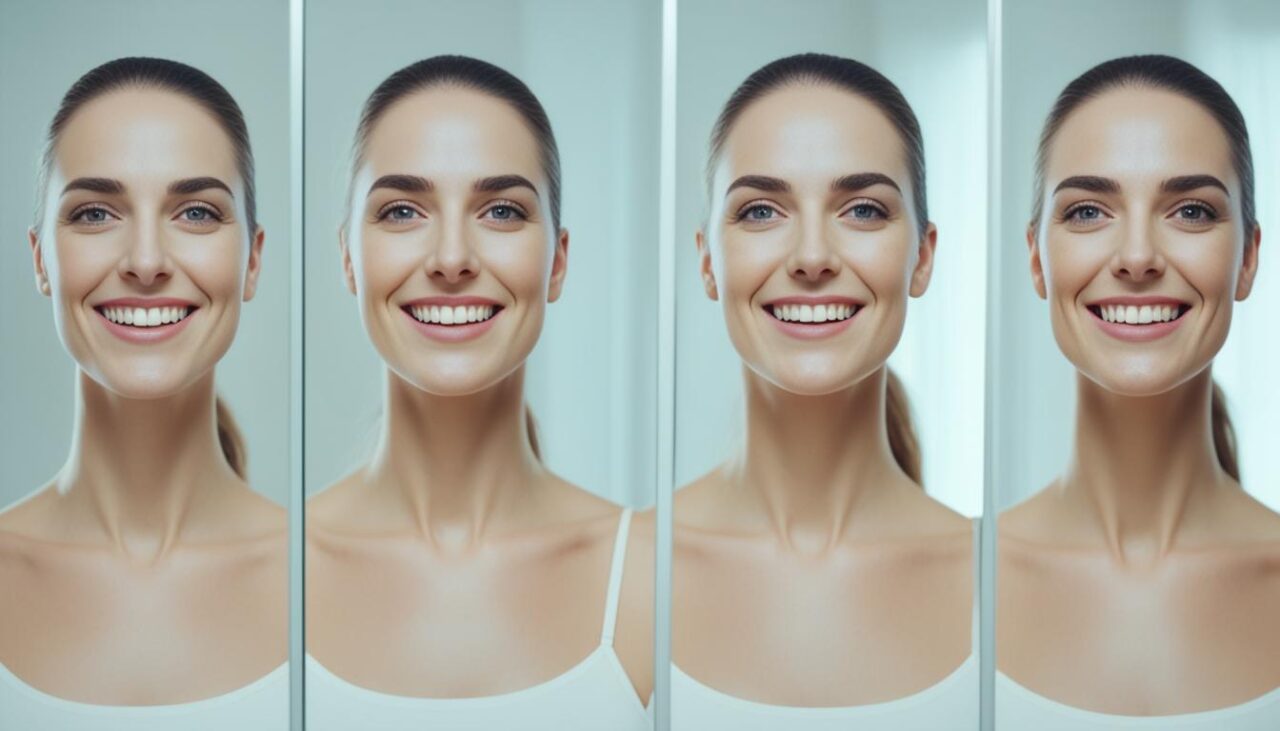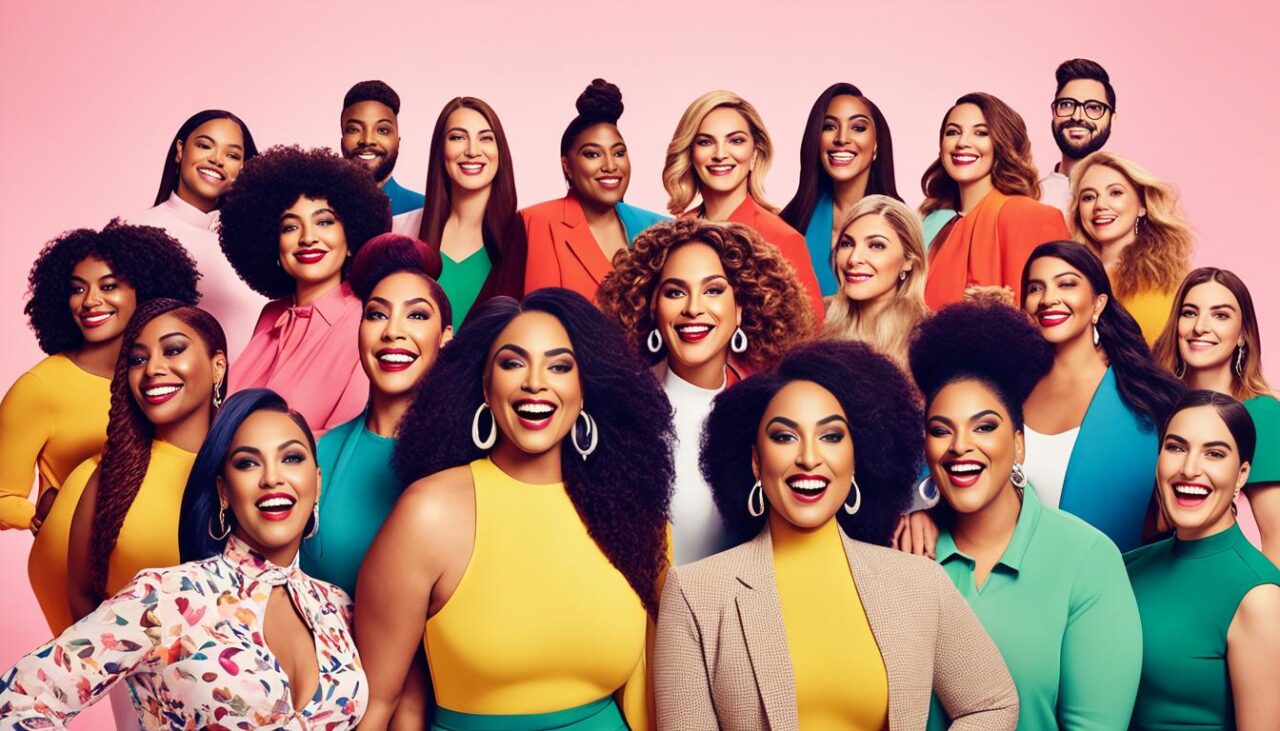Welcome to a new era of inclusivity in the media industry, where beauty diversity takes center stage. As society evolves, so do our standards of what is considered beautiful. This shift has paved the way for a more inclusive representation, challenging traditional beauty norms that have long been ingrained in our culture.
Representation matters, and media has played a significant role in shaping our perception of beauty. For years, the industry has perpetuated a narrow and unattainable standard of beauty, often excluding individuals who don't fit into the prescribed mold. But times are changing.
Today, we celebrate the power of inclusivity and the importance of embracing beauty diversity. The media's evolution towards inclusivity has given rise to a more accurate reflection of the world we live in, where people of all shapes, sizes, colors, and backgrounds are represented.
It is essential to recognize that media plays a crucial role in influencing our perceptions and self-esteem. When individuals see themselves represented in media, they feel validated, accepted, and empowered. This positive impact extends beyond the individual, contributing to a more inclusive and accepting society as a whole.
However, the journey towards inclusivity is not without its challenges. Breaking free from the grip of deeply rooted beauty norms requires ongoing efforts from media creators, advertisers, and fashion brands alike. But with each step forward, we create a space that celebrates the beauty of diversity and challenges stereotypes.
In the coming sections, we will delve deeper into the evolving beauty standards, the power of representation, and how media can continue to drive change and break stereotypes. Join us on this journey as we navigate the changing landscape of media beauty norms and embrace the path towards a more inclusive future.
Evolving Standards: The Transformation of Beauty Norms
In today's society, beauty standards are constantly evolving, shaping the way we perceive and define beauty. The media plays a significant role in this transformation, reflecting and influencing the changing norms. As societal ideals shift, so do the expectations placed upon individuals, particularly in terms of appearance.
Throughout history, there have been significant fluctuations in beauty standards. From the voluptuous figures of Renaissance paintings to the waif-like models of the 1990s, the idealized body image has constantly been in flux. These shifting norms are a result of various factors, including cultural changes, fashion trends, and the influence of the media.

The media, with its power to shape public opinion, has played a crucial role in defining beauty norms. Magazines, television, and social media platforms showcase images that influence our perception of beauty and establish certain standards to strive for. Widespread exposure to these images can lead individuals to internalize these ideals and develop negative body image issues.
However, an encouraging development in recent years has been the increased focus on beauty diversity and inclusivity. The push for representation matters as various media outlets, brands, and influencers have begun challenging the traditional beauty norms. This shift towards embracing diverse body types, skin tones, and individual characteristics has allowed for a more inclusive understanding of beauty.
“The beauty of diversity lies in the acceptance and celebration of every individual's unique qualities.”
By showcasing realistic and diverse representations of beauty, the media is slowly breaking the mold and challenging societal expectations. This progress has been driven by a collective effort to redefine beauty in a way that is more inclusive and empowering for all individuals.
As beauty norms continue to evolve, it is essential to recognize and appreciate the diversity of beauty that exists in the world. Shifting norms and embracing beauty diversity not only empower individuals but also create a more inclusive and accepting society. By challenging the traditional standards perpetuated by the media, we can foster a culture of self-acceptance and redefine the meaning of true beauty.
Embracing Inclusivity: The Power of Representation
In today's rapidly evolving media landscape, there is a resounding call for inclusivity and diversity in beauty standards. The impact of representation in the media cannot be understated – it has the power to shape narratives, challenge societal norms, and ultimately redefine what is considered beautiful.

Embracing inclusivity in media means actively seeking out and celebrating beauty in all its forms. It means recognizing that there is no singular definition of beauty, but rather a spectrum of diverse features, cultures, and experiences that deserve equal representation. By showcasing individuals from various backgrounds, ethnicities, sizes, and abilities, media plays a crucial role in breaking down stereotypes and creating a more inclusive society.
Representation matters because seeing oneself reflected positively in the media can have a profound impact on self-esteem and body image. When individuals from marginalized communities are consistently portrayed as beautiful, it sends a powerful message that their identities are valid and worthy of celebration. This shift in media portrayal not only fosters a sense of belonging but also empowers individuals to embrace their own unique beauty.
“Beauty diversity is not a trend, it is a lasting movement that is reshaping what it means to be beautiful.” – Alicia McCormack
However, achieving beauty diversity and inclusivity in the media is not without its challenges. The industry has long been dominated by narrow beauty standards that exclude many individuals. Overcoming these deeply entrenched norms requires a collective effort from media creators, brands, and consumers.
As consumers, we play a vital role in demanding more inclusive representation. By supporting brands and media platforms that embrace diversity, we send a powerful message that beauty comes in all shapes, sizes, and colors. Additionally, we can use our voices and social platforms to amplify underrepresented voices and push for change.
As media continues to evolve, it is crucial that we continue to push for inclusivity and challenge the status quo. By embracing inclusivity and celebrating the beauty diversity that exists in our world, we can create a media landscape that uplifts and empowers all individuals, changing beauty norms for the better.
Media Evolution: Enabling Change and Breaking Stereotypes
The recent media evolution has played a pivotal role in challenging traditional beauty norms and breaking stereotypes. With the shifting norms, media platforms have become increasingly aware of the need to promote beauty diversity and inclusivity.
Social media platforms have emerged as powerful tools in this media evolution. Influencers and content creators utilize their platforms to showcase diverse beauty representations, encouraging individuals to embrace their unique features. Through viral campaigns and inclusive hashtags, social media has fostered a supportive community where beauty diversity is celebrated rather than diminished.
Moreover, the advertising and fashion industries have taken significant steps towards positive change. Brands are recognizing the value of representation and are casting models from a wide range of backgrounds, ethnicities, body types, and abilities. By featuring these diverse models in their campaigns, they send a powerful message that beauty comes in all shapes, sizes, and colors.
Despite the progress made, the media's journey towards beauty diversity is far from over. It requires continuous effort to shift the narrative and challenge deep-rooted norms. The industry must amplify underrepresented voices, ensure equal representation, and dismantle harmful stereotypes.
Looking ahead, the future possibilities for advancing beauty diversity in the media are promising. By embracing evolving standards and acknowledging that representation matters, media platforms have the capacity to shape a society that celebrates the unique beauty each individual possesses. Together, we can create a media landscape that reflects the true diversity of the world we live in.







